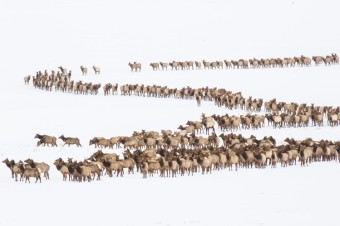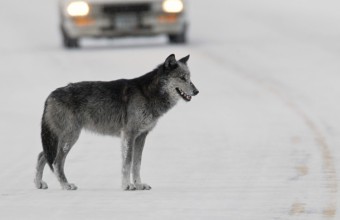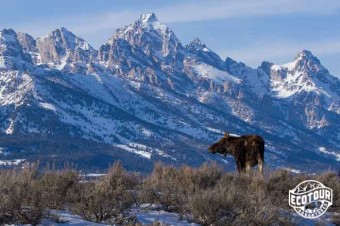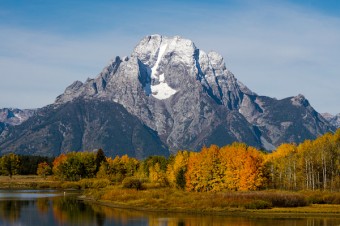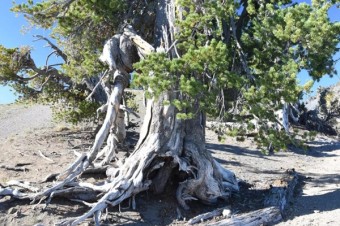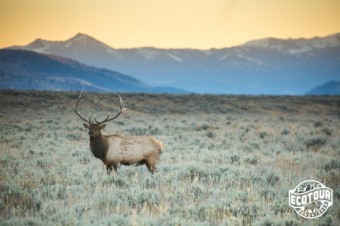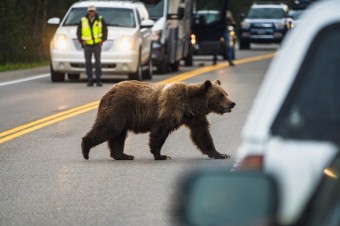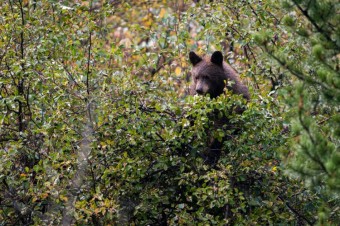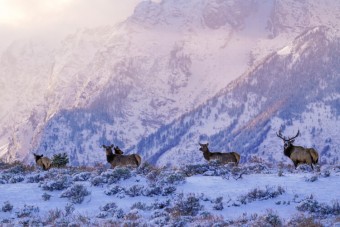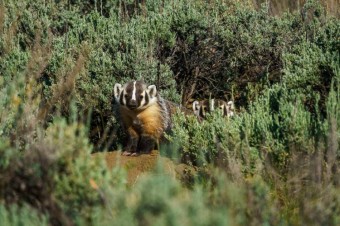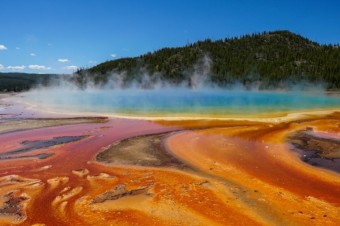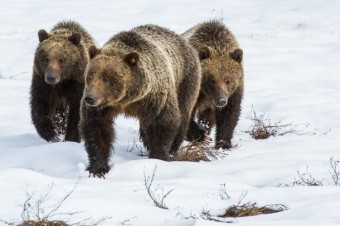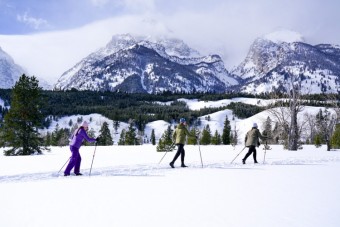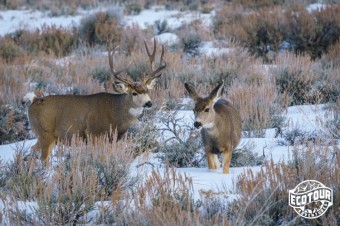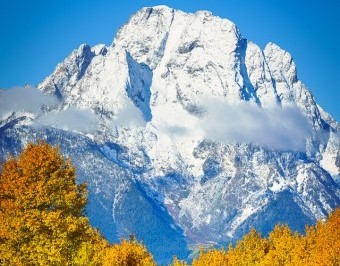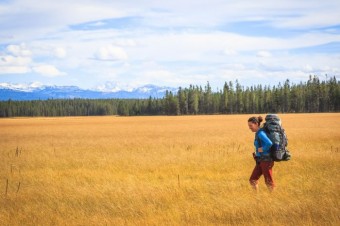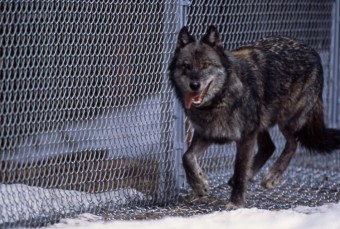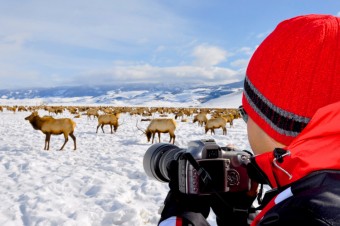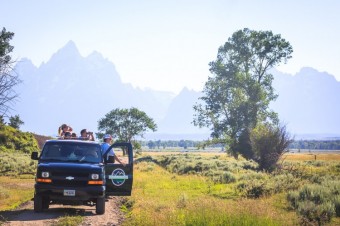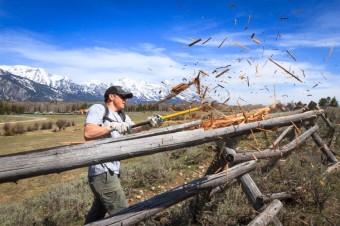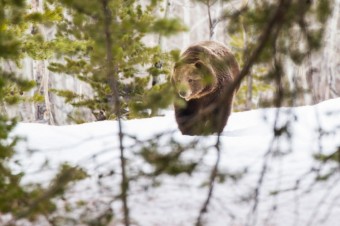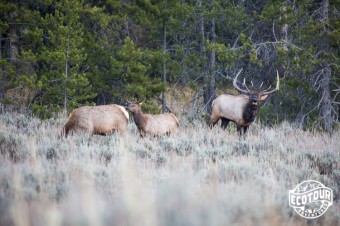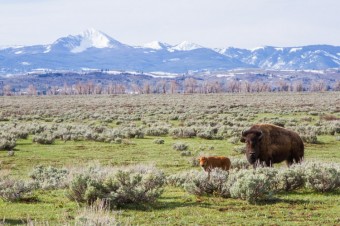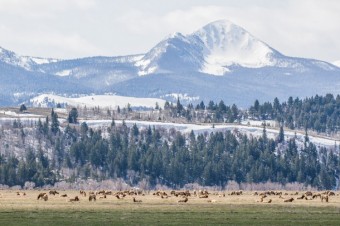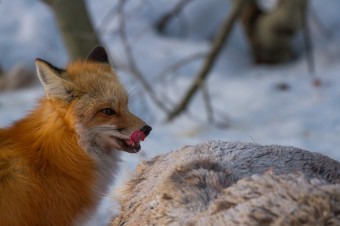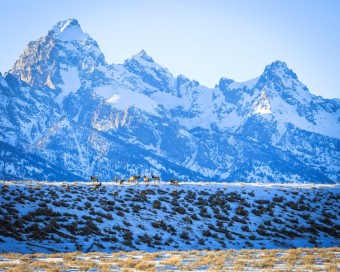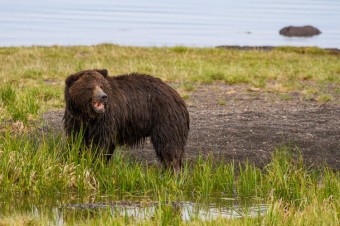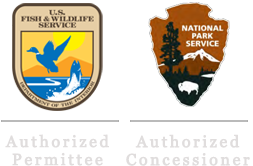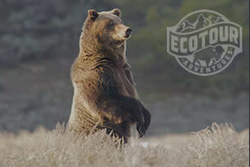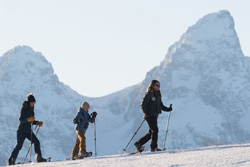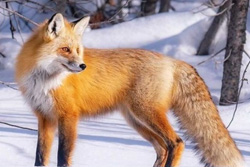-
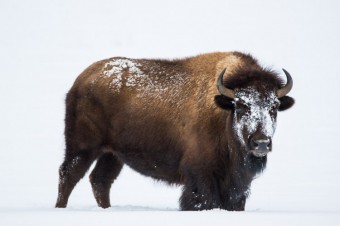
Interested in learning more about our National Mammal, the American bison? We're excited to begin a new program of sharing book, documentary, and podcast recommendations that our guides have found particularly informative and educational. Our guides have spent years learning about the GYE, so keep in mind that these recommendations only scratch the surface. This month we're highlighting the bison!
-
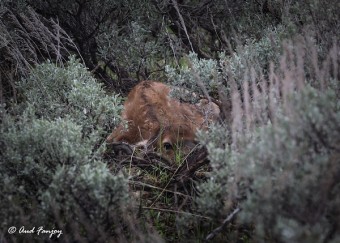
Spring marks the arrival of newborns on the landscape. The lush green meadows of the Greater Yellowstone Ecosystem provide nutrient-rich food for mothers and protective cover for their offspring. Elk, bison, mule deer, moose, and pronghorn all give birth between early May and late June, meaning we're seeing a lot of new, adorable faces on the landscape. Read our latest blog post to learn more about the birthing season and the very important reasons behind this seasonal, synchronous timing!
-
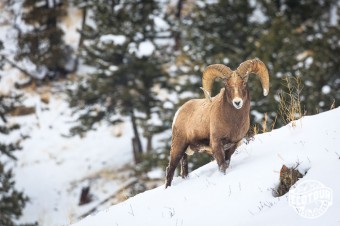
Like a gunshot, the sound of two bighorn butting heads can be heard over a mile away. It's a tell-tale sign (and sound!) of winter in Jackson Hole. The bighorn rut, or mating season, is here and it is one of the Greater Yellowstone Ecosystems most powerful spectacles of nature. Here's what you need to know about this not to be missed natural event.
-
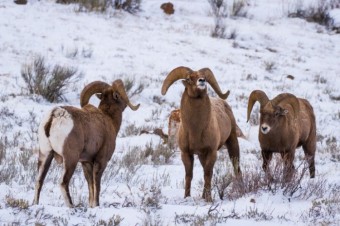
As winter's grasp approaches, wildlife in the Greater Yellowstone are beginning to migrate to low elevation refuges, avoiding deep snows in the high country. Though many animals like deer, moose, and elk can be found year round in Jackson Hole, bighorn sheep (Ovis canadensis) are most easily viewed during the winter months when they travel from the high peaks of the Gros Ventre Mountains to Miller Butte on the National Elk Refuge. Read on to learn more about this charismatic big game species.
-
It’s starting to get crowded in the Jackson Hole Valley. Thousands of animals; elk, bighorn sheep, mule deer, moose, bison, and pronghorn are beginning to migrate across Grand Teton National Park and the National Refuge, concentrating as they head towards critical winter range. Eagles, Trumpeter swans, and diverse waterfowl species are also joining in to the gathering. Determined wildlife watchers may even spot grizzlies or wolves! With the human crowds of summer long gone, November and December are fantastic months to view wildlife of all types, here’s what not to miss!
-
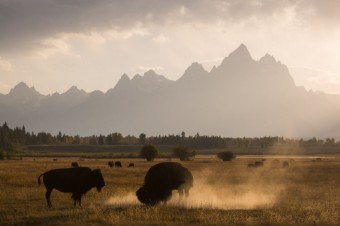
It’s Angry August in the Greater Yellowstone Ecosystem and the bison rut is at its peak! 2000 lb giants bellow, kick dirt and engage in sometimes deadly contests for dominance and the chance to mate. The Yellowstone Bison rut, or mating season is one of our favorite annual events to experience (from a distance or the safety of our safari style vehicles!), here are some interesting facts about it!
-
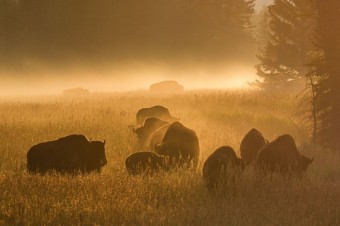
Common and boundless pasture were the words used by Lewis to describe the habitat of bison, who were equally as abundant at the time. Once estimated in numbers of 30-60 million, in herds which “darkened the whole plains” (Lewis and Clark), bison were approaching extinction by the late 1800’s. Today this charismatic megafauna has rebounded and is a frequent sight in both Grand Teton and Yellowstone National Parks.
-
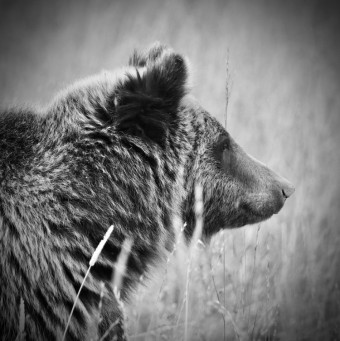
August in the Greater Yellowstone Ecosystem marks the peak of summer and the hint of the fall to come. Antler growth amongst deer, elk, and moose is nearly complete, owls and other birds of prey are fledging, wolf pups are are beginning to transition from the den to rendezvous sites, and the bison rut has begun! Check back for more recent sightings from the Greater Yellowstone Ecosystem.
-
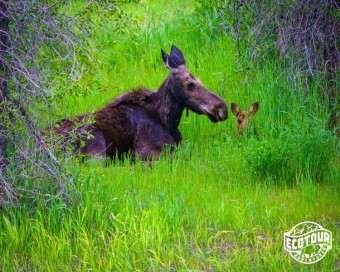
Summer is here in Grand Teton and Yellowstone National Parks! June is a month of wildflowers, colorful songbirds, and baby animals! Elk and moose calves, deer and pronghorn fawns, and bighorn sheep lambs are joining the bison calves, grizzly and black bear cubs, wolf and coyote pups that are already on the landscape. The regions rivers and streams are swollen with meltwater as snowfields recede into the high country, revealing lush green vegetation. We're out touring Grand Teton and Yellowstone National Parks daily, check back for more highlights as the month progresses!
-
As COVID-19 infected the world one year ago, infectious disease experts scrambled to slow the spread and work towards a vaccine. Using a now common practice known as the Polymerase Chain Reaction (PCR) microbiologists were able to rapidly replicate DNA, enabling the covid tests many of us have taken while helping with the development of the vaccine itself. What you might not know is that none of this would have been possible without Yellowstone’s microbial life. Thanks to the work of an exceptionally curious microbiologist in the 1960’s, the power of PCR was eventually unlocked, saving countless lives. Today we seek to better understand this groundbreaking microbial discovery and the role basic research plays in the advancement of science and our understanding of the world.
-
With sunshine filling the forecast for the first week of March we're experincing a great preview of the coming spring. As days continue to lengthen and the sun rises higher in the sky our chances for beautiful sunny weather increase, yet it is very much still winter in Jackson Hole. Deep snow means most of our big game species are concentrated in the southern end of the valley, but it is possible that the first grizzlies of they year may soon be emerging in Yellowstone. Watch for sage grouse beginning to gather on exposed slopes, and the first migratory birds of spring to return, including mountain blue birds, red winged blackbirds, and red tailed hawks. Winter isn't over yet but the first signs of spring are beginning to appear!
-
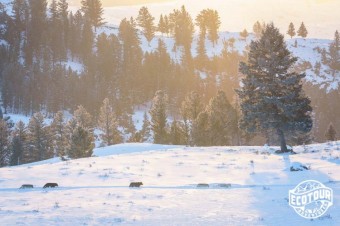
February is the heart of winter in The Greater Yellowstone Ecosystem. Wildlife are concentrated on winter range and this year has been one of the snowiest on record in Jackson Hole. Moose have dropped antlers, and mule deer will soon follow suit. The wolf and coyote mating season wraps up by the end of the month as days begin to grow longer, a hint of the coming spring. Read on for more video and photo updates!
-
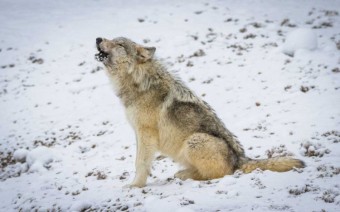
We’ve been enjoying some of the best wolf watching in years in Yellowstone this winter, over a quarter century since wolves were reintroduced to the world’s first National Park. Though wolves can be observed any month of the year, winter is usually the best time to see them due to increased wildlife density on winter range and an increase in activity that comes from the annual wolf mating season. Add in sparse winter crowds and the stunning snowy wonderland of Yellowstone and you’ve got the makings of a perfect winter adventure.
-
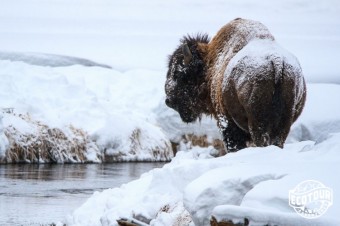
Yellowstone and Grand Teton National Parks are some of the best places in the world to view wild bison year round, and a common question we get is “how do you tell the difference between male and female bison?” Both sexes have horns, meaning even experienced wildlife watchers can be challenged when sexing bison which is why it’s important to use multiple methods of identification. Careful observation in four main areas; horn shape, horn size, head shape, and body characteristics are how we tell the difference. Read on to learn more.
-
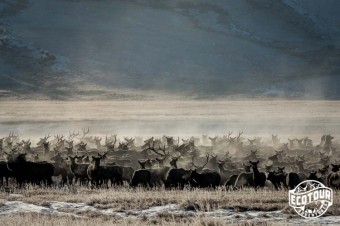
December marks the official start to winter across the Greater Yellowstone Ecosystem. Elk are now concentrating by the hundreds on the National Elk Refuge, moose can be found in the sagebrush flats of Grand Teton National Park, mule deer are on winter range such as the sunny hillsides of the East Gros Ventre Butte above the town of Jackson, and Bighorn Sheep can be found headbutting and running about the cliffs of Miller Butte. Most bears are now hibernating though it is still possible to see grizzlies. Trumpeter Swans and dozens of species of waterfowl are congregating in open water along the Snake River and Flat Creek on the National Elk Refuge. Red foxes and coyotes can be found mousing through the snow, and wolves may be observed as well!
-
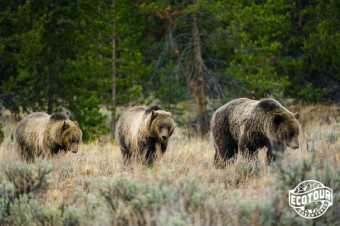
November is a quiet time of year for visitors to Grand Teton National Park but offers excellent opportunities for wildlife viewing. Elk and mule deer are migrating towards winter ranges where they will concentrate in great numbers. Moose congregate on the sagebrush flats of southern Grand Teton, and bighorn sheep arrive on the slopes of Miller Butte on the National Elk Refuge. Trumpeter swans and numerous other water fowl species gather on open water while bald and golden eagles and rough-legged hawks migrate into the valley from as far north as the arctic circle! Grizzlies remain active though the end of the month, and sometimes into December. Check in for more updates throughout the month!
-
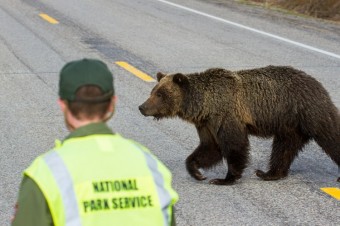
If you’re traveling into the backcountry of Yellowstone or Grand Teton National Parks or the surrounding wild country, bear spray is an essential item to bring with you. The Greater Yellowstone Ecosystem is grizzly country, and though bear attacks are rare, if one occurs the effective use of bear spray has been shown to prevent injury in 98% of cases! In order for bear spray to be effective however, you have to know how to use it. For bear spray to do its job it needs to be easily accessible and ready to fire from a safe location, in working order, and discharged properly. Here are 7 ways to effectively carry and use bear spray...
-
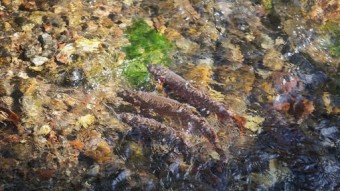
Yellowstone cutthroat trout (YCT) are a subspecies of trout in the salmonidae family. Cutthroat trout, named for the orange slash on their jaw, will bear large black spots grouped more towards the tail. They are a fluvial fish, meaning that they live and spawn in rivers and streams, but can also be found in lakes given the right conditions. These trout are cold blooded so their body temperature will directly reflect that of their environment. For this reason they can typically be found in waters ranging from 39 to 59 degrees fahrenheit throughout Utah, Idaho, Wyoming and Montana.
-
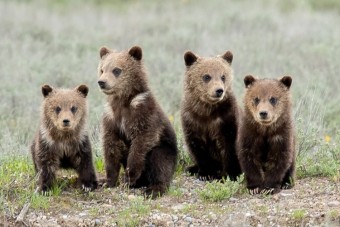
Today, the chance to see grizzly bears is a huge draw for visitors to Yellowstone and Grand Teton, but it wasn’t always this way. Just a few decades ago only a few hundred grizzly bears were left in the lower 48 states, the result of a decades-long concentrated effort by homesteaders, ranchers, and the US Government to tame the wildness out of the west by removing grizzlies, wolves, and other carnivores from the landscape.
How did we get here, to a place where the chance to see Grizzly 399 and her cubs draw visitors from all over the world? How did we get to a place where the Greater Yellowstone grizzly population is nearing carrying capacity, and bears are returning to haunts hundreds of miles from the protected landscapes of Grand Teton and Yellowstone National Parks? What does all this mean for the future for Grizzly 399 and bears in Yellowstone country and beyond? -
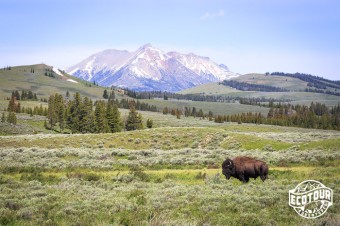
Covid-19 is here. We’ve been asked to self-isolate and avoid unnecessary travel. Some of us might not be able to leave our homes at all right now. We will get through these challenging times and Nature can help. Though traveling to places like Grand Teton and Yellowstone National Parks are currently not good options, there are plenty of options whether within the confines of our homes, backyards, or in nearby natural areas to get a much needed dose of vitamin Nature.
-
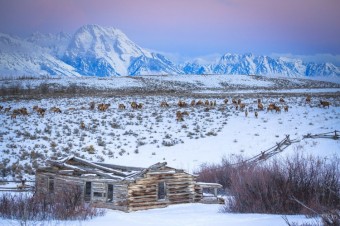
Each winter, the guides at EcoTour Adventures lead our guests on week-long expeditions across the Greater Yellowstone Ecosystem, starting beneath the Mighty Teton Range in Jackson Hole, continuing into the snowy geyser filled interior of Yellowstone, and culminating with wildlife watching along Yellowstone’s Northern Range. Read on for a Trip Report from one such adventure through winter in wonderland.
-
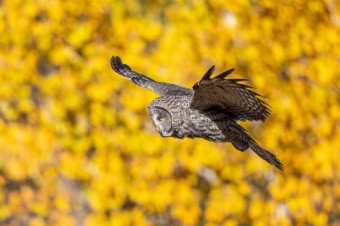
Perfect fall colors. Bull moose framed by golden cottonwoods. Technicolor sunsets reflecting in Yellowstone’s thermal waters. Grizzlies, wolves and bison in the snow. All of this topped off by a glimpse at the winter wonderland of Yellowstone made for an unforgettable 2019 Fall Photography Workshop with Sony Alpha Photographer Nate Luebbe. As many Jackson locals can attest, fall was fleeting this year, with warm days bookended by winter storms coating the Tetons in stunning blanket of white. This time of transition is a favorite for photographers as it provides the opportunity to capture unique animal behavior and stunning landscapes during a quieter time of year with fewer visitors to the parks. With this in mind, Nate and I set out to explore Grand Teton and Yellowstone National Parks with a small group of photography enthusiasts, ranging from a beginner who had never used a dslr camera to participants with years of experience shooting all over the world.
-
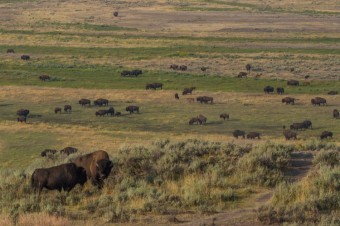
“The American Serengeti” - a landscape filled with herds of bellowing bison, sprinting pronghorn antelope, bighorn sheep standing atop cliffs, grizzlies and wolves hunting in wildflower filled meadows. Views like these were commonplace during the time of Lewis and Clark, but largely vanished due to market hunting throughout the 1980’s. But not all was lost, and today thanks to over a century of dedicated conservation, the American Serengeti still has a home, Yellowstone. Today, the wild lands of the Greater Yellowstone Ecosystem host the greatest abundance and diversity of wildlife that has been found here in the last 130 years! From the largest remaining herd of wild bison, to hundreds of bird species, massive elk, deer, and pronghorn migrations, wolves, grizzlies and mountain lions, Yellowstone and Grand Teton National Parks are a wildlife viewing hotspot. Want to make the most of a trip to see wildlife in the Greater Yellowstone Ecosystem? Read on.
-
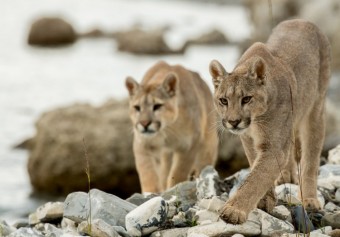
Puma, Cougar, Panther, Catamount. With a historic range from Alaska and Northern Canada, through the United States, Central America and all the way down to the southern tip of South America, the Mountain Lion is known by many names. They are secretive by nature yet occasionally persecuted after conflict with ranching and hunting interests. But for some cats in southern Patagonia things are changing. Can sustainable ranching practices and the development of a puma and wildlife watching tourism industry be the key to the future of both ranching and the Patagonian Ecosystem?
-
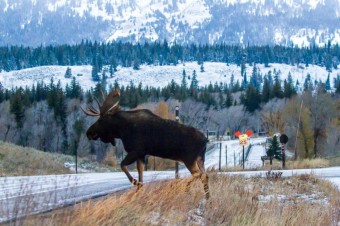
We’ve all seen roadkill on the side of the road this winter. It’s a problem that kills hundreds of animals in Teton County, WY annually, thousands more statewide. Fortunately the state of Wyoming is stepping up to make our roads and wildlife safer, and now we all can pitch in too! Wildlife Conservation License Plates are now available, and the proceeds go towards wildlife crossings and other mitigation strategies on our roads. EcoTour Adventures and many of our guides are proud to be among the first 500 plates ordered, and we’re challenging you to be part of the next 500! Read more about how to get your plate and support wildlife conservation here.
-
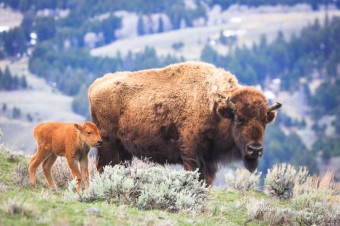
Earlier in May we gathered for a five day staff retreat and training, preparing to share this beautiful landscape with over 5000 visitors annually. The guides of Jackson Hole EcoTour Adventures are your sustainable connection to the wilderness of the Greater Yellowstone Ecosystem, enjoy this trip report from our summer 2018 training!
-
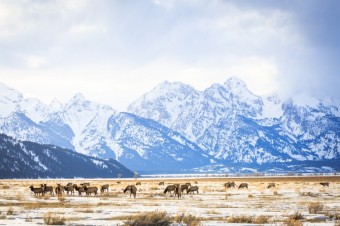
All across the Greater Yellowstone Ecosystem, rivers of tens of thousands of animals are now flowing out of the regions valleys, following a wave of greening vegetation into the mountains. By migrating, animals can access the best quality forage as it emerges across the landscape, an ancient strategy which has enabled them to thrive across the GYE. But many of these migrations may be at risk, and without help could be lost forever.
-
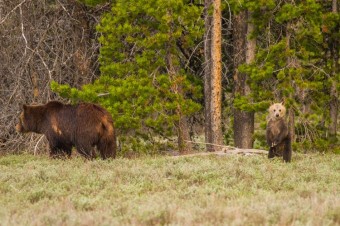
March 2018 has come in like a lion, two mountain lions to be exact! We've been enjoying a rare look at these elusive cats on the National Elk Refuge just outside of Jackson, Wyoming over the past week, thrilling guides and guests alike. Though winter's grasp remains firm in Grand Teton and Yellowstone National Parks, signs of spring are also emerging. Mountain bluebirds and other migratory songbirds have returned to the valley, and elk have already started spring migrations. We began the month with deep snowfall and wolf sightings, learn more about what the wildlife of Jackson Hole are up to in the latest wildlife log from Jackson Hole Ecotour Adventures!
-
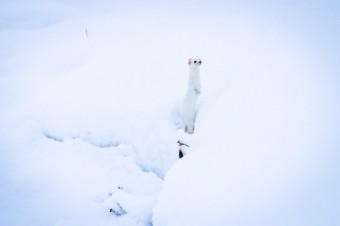
"It's the heart of winter in Jackson Hole. Deep snows have filled the high country of Grand Teton and Yellowstone National Parks. Insulated by the snowy blanket, grizzly and black bears, sleeping away the winter. Large ungulates, such as elk, and bighorn sheep have migrated into the valleys to escape the worst of winter. Camouflaged in white, ermine bound across the landscape, adapting to the winter world. Our recent multi day tour of Grand Teton and Yellowstone National Parks provided an intimate portrait of the strategies wildlife use to survive winter in the Greater Yellowstone Ecosystem. It's one of the wildest landscapes left in the Lower 48 States, read on to learn more! "
-
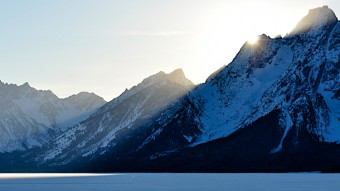
January has provided a bounty of wildlife sightings on Ecotours with the guides at Jackson Hole Ecotour Adventures. We’ve explored track and sign of elk, moose, and great gray owls on our cross country ski and snowshoe tours in Jackson Hole and listened to the howls of the Lower Gros Ventre wolf pack in Grand Teton National Park. Our most recent Yellowstone Multi Day tour revealed a winter wonderland of steaming geyser basins, frost covered bison, wolves, and diverse winter wildlife emblematic of the Greater Yellowstone Ecosystem. Read on to learn more about the highlights of our wildlife, snowshoe, and cross country ski safaris in Grand Teton and Yellowstone National Parks for the first month of 2018
-
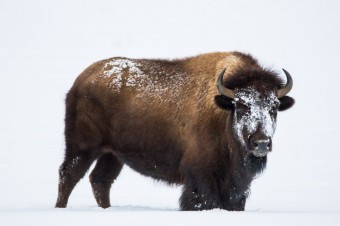
Winter has arrived in Jackson Hole, and a battle for life has begun. Wildlife are becoming concentrated in the valley floor, sheltering from deep snows in the Teton Range and Yellowstone National Park. The winter season is a great time to observe wildlife in the Jackson Hole Valley, learn more about what we have been seeing this month!
-

Located at the interior of over 20 million acres of diverse habitat, Grand Teton and Yellowstone National Parks are often seen as the core of what is called the Greater Yellowstone Ecosystem (GYE). As one of the last relatively intact temperate ecosystems left on earth, the GYE is home to massive mammal migrations, the largest remaining wild bison herd, diverse bird species, grizzly bears, wolves and more. This October, Jackson Hole Ecotour Adventures partnered with our friends at the Greater Yellowstone Coalition to share the GYE with Coalition members, an intimate three day exploration of Grand Teton and Yellowstone National Parks.
-
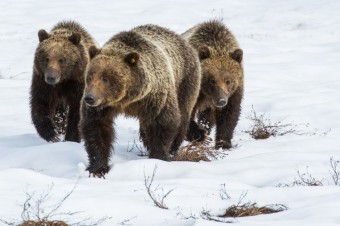
Today the valley of Jackson Hole is protected by Grand Teton National Park but before 1950 much of it could have been lost to development, threatening habitat for pronghorn antelope, elk, bison, grizzly bears and more. Learn more about the battle for Jackson Hole and current threats to other National Monuments across the country.
-
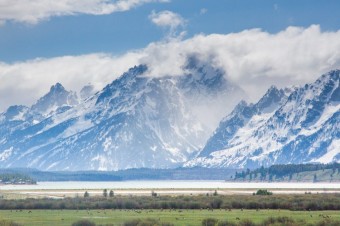
Life is flourishing across the Jackson Hole Valley and green meadows of Yellowstone National Park. Elk and moose calves have been spotted, and the first newborn bear cubs of spring are romping around Grand Teton and Yellowstone National Parks. From bighorn to beavers, great gray owls to grizzlies and gray wolves, this spring has been an unforgettable one. Read on to learn more!
-
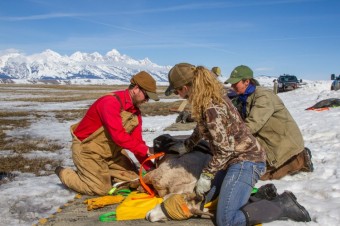
What do helicopters, gps collars and bighorn sheep have in common? They are all an integral part of research being conducted by Wyoming Game and Fish (WYG&F) and the University of Wyoming (UW) just outside of Grand Teton National Park! Ecotour Adventures Naturalists Laura Krusheski and Josh Metten recently joined scientists for a hands on capture operation just outside Grand Teton National Park. Read on to learn more about this important research.
-
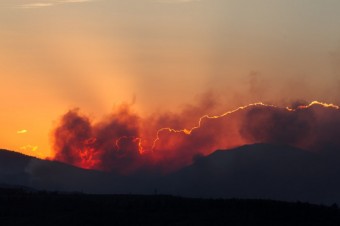
As Jackson Hole Ecotour Adventures celebrates its 10th year anniversary as a Carbon Neutral company, we are reminded of the eminent challenge of Climate Change on the Greater Yellowstone Ecosystem. Learn more about the changes which may be coming to Jackson Hole, Grand Teton and Yellowstone National Parks.
-
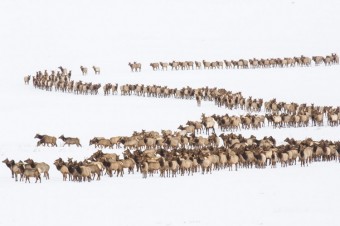
Despite persistent storms and snowfall, late February was characterized by signs of spring. As days grow longer, changes are happening in the Greater Yellowstone Ecosystem. Some animals are preparing for the coming summer, returning to nest sites, courting partners, or even mating. Other animals are simply enduring, attempting to wait out winter’s grasp before spring’s rush of life returns. We’ve had some exciting sightings in the past two weeks, including wolves, new bird species, nesting bald eagles, and more as the battle for life throughout Jackson Hole’s winter continues.
-
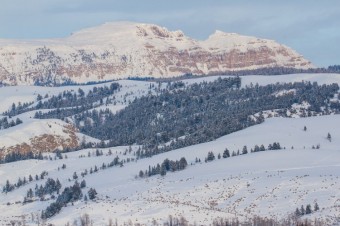
Jackson Hole endured one of its toughest snow storms in years in early February, with heavy winds and snow knocking down power poles to Jackson Hole Mountain Resort, closing the ski area for 5 days. Heavy snow turned to rain in the valley, melting some of the snowpack, a boon for wildlife. By the 11th of February, the clouds began to lift, revealing a stunning winter landscape.
-
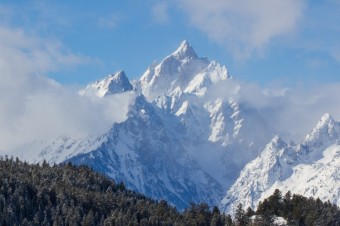
The first month of 2017 was a snowy one in Jackson Hole with many locals calling this winter one of the snowiest in several decades. Deep snows have concentrated wildlife into the valley, with many of them venturing right into town! Ecotour guides have been finding wildlife all over Grand Teton National Park and the National Elk Refuge including these highlights from the past two weeks.
-

Welcome to Jackson Hole Ecotour Adventures Wildlife Log for the week of January 2nd-8th 2017. In each log we provide updates on the past week’s sightings from trips in Grand Teton and Yellowstone National Parks! The Greater Yellowstone Ecosystem is a dynamic environment, with wildlife constantly on the move and changing behaviors throughout the changing seasons, read on to learn more about the first week of 2017!
-
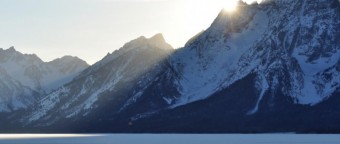
Today, the peaks of the Tetons to the west and Gros Ventre mountains to the east lie blanketed in thick snow. Wildlife are still congregating in the valleys, where, unlike the mountains, the already thin snow cover has begun to melt out. As days lengthen our thoughts here at EcoTour Adventures are beginning to think of spring and the flush of life which follows the melting of snow.
-
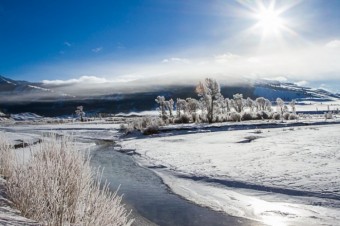
Winter in Yellowstone and Grand Teton National Parks provides abundant wildlife viewing opportunities. Massive herds of elk and bison are found concentrated in the valley floors, while deer and bighorn sheep occupy the hillsides. Foxes, coyotes, and wolves become more visible as well, making winter one of the best times to view our wildlife beneath snow covered peaks.
Subscribe to Email Updates


